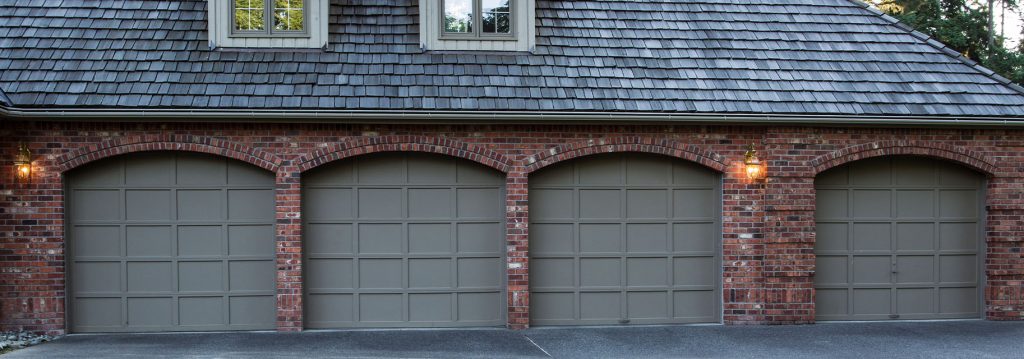Why Weather Stripping Matters More Than You Think
We rely on our garage doors daily, but often forget that a small, flexible strip at the bottom plays a big role in keeping everything in balance. That’s the weather stripping. It’s the first line of defense against water, pests, drafts, and even dust. However, it wears out over time. Therefore, knowing when to replace it can save us from unexpected damage or energy waste.
In other words, a worn-out strip isn’t just a cosmetic issue. It can lead to moisture buildup, insulation problems, or even increase the risk of rodents sneaking into the garage. So let’s break down how to spot wear early, what it means for your home, and when to act.
Signs Your Weather Stripping Is No Longer Working
We often overlook the signs of failing weather stripping until they become obvious. However, small clues can help us act before things get worse. For example, if we notice daylight peeking through the bottom of the garage door, it is a sign that the seal has likely shrunk or cracked.
Secondly, if water pools inside the garage after rain or snow, the weather stripping may no longer provide a proper barrier. In addition, drafts or uneven temperatures in the garage could point to a worn or flattened seal that’s no longer doing its job. Paying attention to these subtle signals can save us time and money down the road.
The Impact of Calgary’s Climate on Your Garage
Living in Calgary means dealing with dry air, snow, ice, and sudden temperature shifts. Therefore, our weather stripping takes a beating throughout the year. Rubber and vinyl seals tend to harden and crack in extreme cold, which leads to gaps along the edges of the garage door.
Most importantly, these gaps can let snowmelt or rainwater seep inside, affecting tools, storage boxes, or even our vehicle. In the same vein, pests like mice and insects often find their way in through these vulnerable spots. So keeping an eye on the stripping is essential for garage door longevity and protection.
How Often Should We Check It?
We don’t need to wait until the garage floods or the cold wind whistles in to inspect our seal. Firstly, a seasonal check—especially before winter and spring, makes a big difference. During these times, temperature changes put the most pressure on the weather stripping.
Likewise, checking after a heavy storm or long cold snap helps us spot wear early. Run your hand along the bottom edge of the door from inside. If it feels brittle, warped, or cracked, it’s probably time for a replacement. We can also press lightly along the seal to see if it’s still flexible. If it doesn’t bounce back, it’s losing its effectiveness.
What Kind of Stripping Is Best for Replacement?
Not all weather stripping is the same. We usually find rubber, vinyl, or brush-style options. Rubber tends to provide better sealing against moisture. However, it may crack faster in extremely cold temperatures. Vinyl is slightly tougher and more resistant to UV rays, but it can harden over time.
In addition, brush-style seals are often used along the sides and top of the door. These help prevent drafts but are less useful for keeping water out. Choosing the right type depends on the specific problem we’re addressing. For instance, if the bottom seal is letting water in, a thick rubber replacement is usually the most effective.
DIY or Professional Help?
Replacing the weather stripping can be a manageable DIY task. However, it depends on the style of garage door and how the stripping is mounted. Some seals slide into a metal track, while others are nailed or stapled in place. If we’re comfortable using tools and measuring accurately, it’s certainly possible to handle it ourselves.
That said, a professional can assess the full door, including alignment, track wear, and spring tension. Therefore, if we’re unsure whether it’s just the stripping or a larger issue, reaching out for garage door repair in Calgary might be the better route. It ensures nothing is missed during the inspection.
The Hidden Costs of Ignoring It
When weather stripping wears out, energy loss is one of the first issues we notice. Cold air slips in during winter and hot air creeps in during summer. Consequently, our heating or cooling systems have to work harder, which means higher utility bills.
Additionally, moisture from rain or snow can lead to mold or corrosion in the garage. In the long run, this can damage both the structure and anything we store inside. For example, cardboard boxes weaken quickly, and electronics or tools can rust. Therefore, the small cost of new weather stripping is nothing compared to these potential repairs.
How to Extend the Life of New Weather Stripping
After installing new weather stripping, we want to keep it in good shape for as long as possible. Firstly, cleaning it with a damp cloth every few months helps remove salt, dirt, and debris. This prevents premature wear.
Secondly, applying a silicone-based lubricant lightly along the rubber can help keep it flexible during winter. In other words, maintenance doesn’t need to be complex. Just a few minutes of care each season keeps the strip functioning well for years.
It’s Not Just About the Bottom Edge
While the bottom seal often gets most of the attention, we shouldn’t forget the seals on the sides and top of the garage door. These often use a vinyl or brush-style material. If we see sunlight filtering in or feel a breeze, it may be time to inspect those areas too.
Similarly, the garage door threshold is another place where gaps can form. If the concrete has shifted or cracked, water can sneak in from underneath the seal. In such cases, addressing the floor alignment or adding a threshold seal can help prevent water intrusion effectively.
Extra Tip: Use the Paper Strip Test
One overlooked way to check how well our seal works is the paper strip test. Here’s how it works: close the garage door on a strip of regular paper. Then try pulling it out. If it slides out easily, that section isn’t sealing well. However, if there’s resistance, the weather stripping is still pressing firmly against the door.
We can repeat this along the full width of the door. This simple method helps us identify weak spots without any tools. Most importantly, it works well even if the problem isn’t visible at first glance.
When Replacement Means More Than Just a Seal
Sometimes, we think the issue is just weather stripping, but the problem lies deeper. If the garage door has become misaligned or the bottom edge is warped, new stripping might not fix the gap. Therefore, checking the overall frame, door balance, and panel condition is essential.
We might also hear strange sounds or notice uneven movement. In such cases, what starts as a small maintenance task could be a sign of a larger repair need. If so, getting expert help for garage door repair in Calgary can prevent more serious damage later.
FAQs
How long does garage door weather stripping usually last?
Most seals last about two to three years, depending on exposure to sunlight, moisture, and temperature changes. Regular maintenance helps extend this lifespan.
Can I replace just part of the weather stripping?
Yes, you can replace only the damaged section. However, if one area is worn out, the rest may follow soon, so full replacement is often a better long-term fix.
Why is there still a draft after I replaced the bottom seal?
It could be that the top or side seals are worn, or the door is not closing evenly. Inspect all edges or use the paper strip test to locate gaps.
What’s the best material for Calgary’s winter?
Rubber or heavy-duty vinyl is ideal. Both handle cold well, but rubber tends to stay more flexible in freezing temperatures.
Is professional weather stripping installation worth it?
If the seal is tricky to access or you suspect misalignment, a pro can make sure everything is done right. It’s especially helpful when other door components also need inspection.











